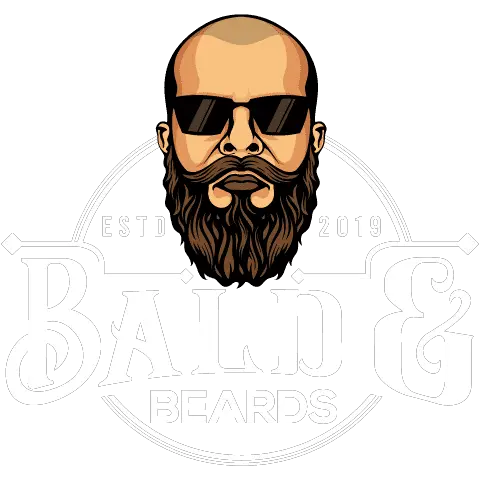So many beard styles allow us to experiment with different angles of our face, drawing focus on cheekbones or creating a pointed chin. Both ducktail and pointed beard styles create this look, but they’re slightly different.
The ducktail beard is one of those technically styled beards that define the shape of your face. When styled professionally, the ducktail style should elongate your face and the bottom part of your chin.
What is a Ducktail Beard?
A ducktail beard is when facial hair is styled to resemble a duck’s tail at the chin, grooming the beard hair into a point that extends the chin and jaw.
The ducktail beard started trending in the 2000s as men grew thicker beards with longer hair. While some define this look as a thick, full bearded style that wraps around the jaw and chin, ducktail beards can also refer to goatees with chin hair that’s thicker and groomed to a point.
Where to Start?
Because of their highly stylish nature and angular look, ducktail beards take some time to shape and grow. I’d suggest talking with a barber and get a professional ducktail beard cut for you to see how it’s shaped, then follow the regimen to maintain it for an easier transition.
While grooming is always important for any beard, the ducktail beard is defined by its perfectly inverted triangle shape and well-kempt trim. You must maintain this beard style with barber shears and a trimmer to keep it from turning unruly and outgrown.
Ducktail Beards vs. Pointed Beards
The ducktail beard is a bit more curved upward and angular than a typical pointed beard. While you may brush your beard to a point at the chin, ducktail beards are also groomed underneath, so the bottom point often curls upward, just like a duck’s tail.
Which Face Shapes Work with a Ducktail Beard?
Whenever you start off with a fresh look, you always want to check that it will compliment your face shape. However, sometimes you just don’t know until you try the look. Expert barbers say that the ducktail beard shape is perfect for the following faces:
- Diamond
- Rectangular
- Round
- Inverted
One thing to keep in mind is the ducktail beard is notable by its pointed shape, so you can style your beard like a goatee with a ducktail or even a Van Dyke beard.
What Celebrities Rocked Ducktail Beards
There are a few celebrities who’ve grown out their beards to achieve this look, including:
Charlie Hunnam Beard

Jake Gyllenhaal Beard
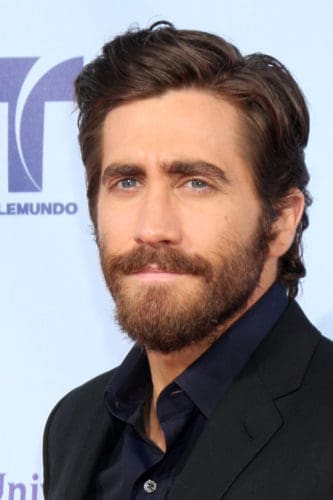
Mel Gibson Beard

Leonardo DiCaprio Beard
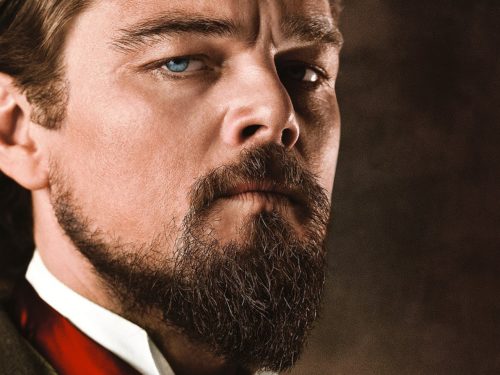
Brad Pitt Ducktail
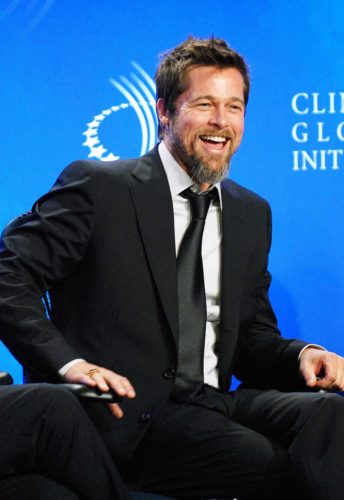
Choose Your Ducktail Beard Shape
Before getting into how to trim the beard, think about what style of beard best suits your face. Ducktail beards need long chin hair, and while some say a perfect ducktail has thicker, fuller hair into the cheek area, you don’t necessarily need to grow a beard out fully.
Here are some ducktail beard hairstyles:
Thick, Full Ducktail Beard with High Cheekbones

Full Ducktail with Lower Cheekbones
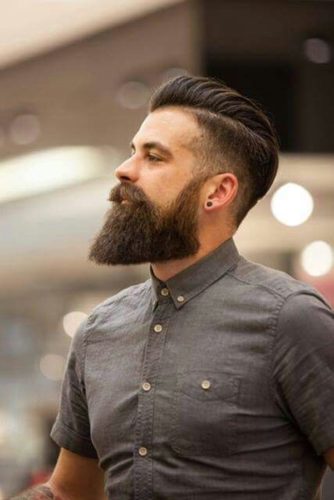
Neat, Trim Goatee with Curled Ducktail
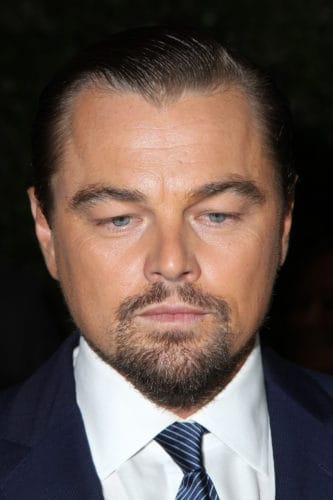
Trim, Faded Beard with a Pointed Ducktail End
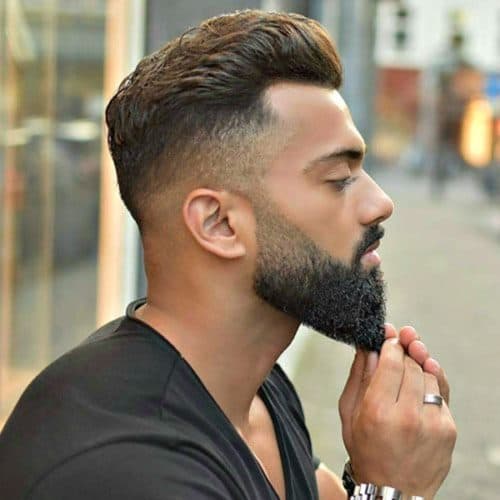
How to Grow, Trim & Shape Your Ducktail Beard
What You Need for This Beard Style:
- Beard comb or beard brush
- Beard shaper or guide (for cheekbones and neckline)
- Barber scissors
- Electric trimmer/shaver
- Quality beard oil
This beard requires a good two to five inches of chin hair. Typical beard growth is 1/2 inch every 3 weeks. Growing out your chin hair is the most important part, as you’ll want it thick and long to brush out to a point and curl upward. The key is to be patient as your beard hair grows out.
Here’s how to trim your ducktail beard once you have enough hair to curl it.
1. Start by brushing out your beard and choose a style
How you shape and trim the hair will depend on the ducktail beard style you choose. Perhaps you want to keep it short and to the point with a goatee and less hair along the jawline, or you may want to go for the thicker, fuller beard to carve your cheekbones and create an angular face shape.
Other styles connect the mustache to the beard or include a soul patch. It’s up to you what will work best for your face, mouth, and angles. It’s best to use a beard comb or brush to smooth out and elongate your hair so you can see the length you’re working with at all angles. However, you’ll need at least two inches of chin hair or more to style the ducktail.
2. Shave your neckline, cheekbones, and mustache
You can use an electric razor with a #1 or #2 to start shaping out your beard hair, then shave clean without the guard or a razor to finish.
Ducktail beards have a very defined shape, but you don’t want to go in to heavy and create hard angles with your beard hair. Therefore, we suggest starting with a higher guard if using a trimmer.
Neckline
Typically, ducktail’s neckline is shaven clean to right about the top of your Adam’s apple. If you shave too far up your neck and chin, it could look disproportionate to the rest of your face. Leave too much and you’ll risk having a neck beard.
Cheekbones
For cheekbones, it defines some ducktail beards to give more angular, high cheekbones by growing hair and trimming it sharply in the hollows of your cheeks.
If this seems like too much maintenance, fade out the hair from your cheekbones to the jawline or simply keep it thick. You can use shears and a beard comb to keep it even.
Mustache
The ducktail beard complements all types of mustaches except for a wiley, bushy cowboy mustache.
Instead, ducktail beards are trimmed quite neatly, so your mustache should also be trimmed and well-kept above the upper part of your lip. You may want to connect it to your beard.
3. Shape the ducktail point of your beard
The chin hair is the longest portion of this beard. Shaping the ducktail can be tricky after you’ve grown out your facial hair, so look at several photos and use a beard shaper tool if you’re unsure about doing this yourself.
Your best tools for this will be a set of barber shears and a beard comb or brush.
Method for Shaping the Point
- First, brush up from your neck and under your chin, pulling the hair underneath your chin forward as you brush.
- Now brush the left side, angling the brush and hair towards your chin. Do the same for the right side.
The key now is to trim downwards, tapering and forming your beard hair to a slight point at the chin. You should also pick a length for your chin hair, as you can keep it long or crop it depending on how long you’ve grown the hair.
Hair on the side of your jaw and chin should be shorter than the hair at the point, but it should also be quite thick unless you go with a different beard shape such as a goatee or Van Dyke.
4. Maintain your ducktail with barber shears and a comb
You should use a high-quality beard comb to guide your hair how you want it to grow towards your chin while using the shears to maintain the length of the hair along your jaw, chin, and cheekbones.
You also don’t want to focus on a single hair at the end of your chin. The point is rather thick, and while some men curl it upwards a bit to resemble a true duck’s tail, this may be overkill if you simply like the angular look of this beard.
What Haircuts Go with Ducktail Beards?
Ducktail beards are quite angular. The shape defines your cheekbones, jawline, and chin so it appears more angular. However, any hairstyle can work with these beards – even a shaved head looks amazing. Here are some examples:
- Bald with beard style
- Receding hairstyles
- Bald fade haircuts
- Widow’s peak hairstyles
- Hairstyles for Thinning Hair
It’s really about the beard shape and cropping the beard to a point, so you achieve that angular look.
